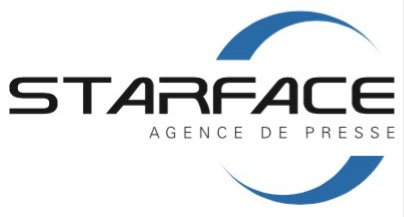For 40 years, on foot, by motorbike, then on a Vespa, Alain Dupuis was the King of press photo salesmen. The man who, from 1973 to 2000, helped Sygma and its photographers make a fortune. A myth, witness to this infamous “golden age” of photojournalism.
“I really loved this job, despite the fatigue and the toll it took on my health. I made a good living and met lots of true professionals, especially one very important man, Hubert Henrotte.” He shared the stories of his “era” in an exclusive interview while sitting on the office couch of his girlfriend, Dominique Martel, former head of international sales for Corbis-Sygma. “Over the past ten years, Dominique and I lost touch with the profession, we very rarely talk about Sygma.”
Read more in La lettre de la photographie
He is quiet, calm, serene when he opens up his private garden. He gained weight after suffering from health problems. As is often the case, when the exhausting rhythm of the newsroom disappears, problems arise. “I cracked. I was walking through the bois de Vincennes like a retired man, and I found myself in a hospital.”
Today, in their charming little tastefully decorated farm, Dominique and Alain spend their time taking care of their grandchildren, their garden, reading, etc. However, at the Saumur train station where he picked me up, after immediately asking if I had news of his old boss, he commented “Did you see the cover of Paris Match, it was by Monique Koutznetzoff again!”. This quiet old man still has his eye.
How did you begin working in this very particular profession, press photo salesman?
Alain Dupuis: In 1962, ‘agency salesman’ didn’t exist. When I returned from military duty, the war in Algeria was still going on. I placed an ad. “Young man free of military duty, looking for work in sales”. I received 42 offers! Times have changed… my father-in-law told me: follow that path.
It was the APIS agency that François Grenier, formerly at France-Soir, just opened on the rue de Trévise, near the grands boulevards in Paris. I went for the interview and the next day started working.
At APIS, there were photographers including Jean Ker, Pierre Bernarsconi, Henri Bureau… they were all nice enough to come with me into the newsrooms. They had to show off the young kid on the block. Some of them even took me along on assignment so I would understand their job.
What media did you sell to at the time?
Alain Dupuis: I was the only salesman, so I did what I could. I left in the morning with at best 10 stories and some black and white prints for each. I began in the Sentier neighborhood, which was where most media were located. In the same building on the Rue Réaumur was France-Soir, Paris-Presse, l’Intransigeant, France-Dimanche, Elle, The Daily Mirror. Two hundred yards away, Madame Del Ducca’s new Paris-Jour, and theParisien Libéré…
At France-Soir, who did you see: Pierre Lazareff ?
Alain Dupuis: Pierre Lazareff, I saw him from time to time. He had a photo editor responsible for daily purchases. However at Elle, I showed the pictures to Hélène Lazareff. The competition were representatives from UPI, AP… I looked at them with big eyes. They sold their “belins” (note: from the belinograph) that were sent directly from the news rooms one or two hours after the pictures were taken! They then came through with their letterhead paper and wrote out the bill. It was very expensive. They charged for transmission fees, in addition to reproduction rights.
So I told my boss that for our “Agency Features”, we needed letterhead notebooks. I went to Paris Presse, I sold a picture for 80 francs, and the editor signed for it. Every evening, I gave copies to the accounting department. This system spread to most agencies and lasted a long time.
What were the other “Agency Features” ?
Alain Dupuis: AGIP, Reporters Associés… A few independent agencies that used their charms, like Giancarlo Botti… Our real competition at the time were staff photographers. They had both photo departments, and staff photographers.
When my boss saw how well I worked, he bought me a blue Peugeot moped. I could get to the Champs Elysées faster than the competition. That was where headquarters were located for magazines including Paris Match, Marie-Claire, Jour de France… And where the offices for the German magazines Stern and Quick were located, then the whole Burda group with whom we worked and partied so hard. There was also L’Express, le Nouvel Observateur and the tabloids (Ici Paris, Détective, etc.). I made a home for myself at APIS.
Was Gamma’s creation in 1967 instantly influential?
Alain Dupuis: My boss, Jean Grenier, was a true journalist, not a businessman. He loved cinema, and sent Henri Bureau to “stalk” Brigitte Bardot, Liz Taylor and Richard Burton, Maria Callas… They sold very well. The market was there. But the creation of gamma, that was the toughest!
They came with financial backing, laboratories, and big offices near the Champs Elysées… They sent photographers everywhere with correspondents all over the planet: the Henrotte method!
The one he would apply to Sygma?
Alain Dupuis: Yes. At the time of the split at Gamma in 1973, Hubert Henrotte bought APIS, their photographers, their archives, everything… I was very happy to work on this team. We found ourselves in the APIS offices on the rue Réaumur: an entry way, a laboratory, two little offices, one for the accountants and one for Henrotte, and in the hall, a rotating glazing machine and print archives.
During the first months, Henri Bureau got a rendez-vous with the Pompidous. Alain Nogues “covered” the drought in the Sahel. There were photographers including Alain Dejean, Christian Simonpietri and others. I’ve obviously forgotten some. But their stories were well sold. We were even competing with Gamma. But they were a bit destabilized.
Jean Monteux, who was a salesman at Reporters Associés, was at Gamma, how did it go between you ?
Alain Dupuis: Normal. We shook hands. I never had a problem with Monteux, even if he had some with his former employees. No low blows between us. We talked about work. You had to stay discreet. I would meet him during my visits. We would race for first at red lights, it wasn’t just a legend. At Sygma, I was a salaried employee, but we still had a percentage of our sales. That said, we didn’t only think about money. Gamma wanted to maintain, and at Sygma, we had to climb, and climb to impose. There was the pride and reputation of the agency!
You had to be the first in the newsrooms, for they would never buy the same story twice. André Lacaze, the first senior photo editor that I knew at Paris Match, showed me the ropes, then there was Walter Caron, Bernard Brick, Michel Sola who wasn’t yet on the buying end, but on the editing end with Didier Rapaud. Later, Match would start buying the same story two or three times to block the competition.
In 1973, 74, 75 how much did pictures cost?
There were per page prices, with a guarantee for one or two pages… When there were scoops, we would try and hike up our prices, but it was hard, there wasn’t a lot of competition. L’Express fought a bit to buy stories. France Dimanche fought a lot more. They fought against Paris Match for events like Edith Piaf’s death, the crowing of the Iranian Imperatrice. For that, they were capable of investing, but it was exceptional. We couldn’t force the machines.
Nothing like the 80/90’s years of the tabloids when Axel Ganz arrived with Voici then Gala…
But before Axel Ganz, there was VSD!
Maurice Siegel’s Vendredi Samedi Dimanche did reignite the market… VSD’s ad campaign boasted a magazine with news you wouldn’t see anywhere else! So every week they needed news exlusives.
From time to time, my hierarchy asked me to reserve certain stories to help VSD. But we couldn’t put all of our balls into one court. Claude Duverger was in charge. He had worked with Maurice Siegel at Europe 1 for a long time. Claude and I had some disagreements, but they were business related, we always got along well.
At that time, outbidding had started between VSD and Paris Match, right?
Alain Dupuis: Oh yes, the bidding began on the phone. I won’t talk about the prices because I might say something wrong, and it has been so long… I never talked about money. But yes, there were times when VSD would offer more than VSD. Match ended up by snubbing VSD… They were seigneurs at Paris Match.
Do you remember some price wars?
Alain Dupuis: Yes, there is one I do remember…I think the agency had an exceptional story about the terrorist attack of Drackkar in Beyrouth (where 58 French soldiers perished). We had a picture of a rescue worker with a very moving gesture towards a soldier. I think there was a “grimpette”. The “grimpette” was a term invented by Michel Sola. All of the salesmen know what the “grimpette” is! Claude Duverger and I showed the same pictures to different magazines. We would call each other after visiting the photo departments. I would return to Michel Sola’s office to say “VSD is bidding this much”. Either he offered more, or it was a thumbs down.
Hubert Henrotte had a very intelligent method with Maurice Siegel who was a journalistic legend… From time to time we voluntarily sold to VSD. I must admit that they commissioned a lot of work from us too.
A little anecdote, when Claude Duverer left on vacation, I replaced him at VSD, which was hard because I worked primarily with Paris Match. Maurice Siegel once got so angry he asked me to leave!
And later, in the 80’s and 90’s, how did prices continue to rise?
Alain Dupuis: When the tabloids arrived everything changed… At Sygma, we weren’t stalking, no paparazzi. But the incredible onslaught of celebrity news raised prices with all of these bankable couples, and above all, the arrival of Gala.
Before, with the royal family of Monaco, there were rendez-vous organized by Sygma. Prestigious photo shoots were organized in advanced with the Grimaldi family which alleviated the “grimpette”. And the “charming people” department was expertly run by Monique Koutznezoff. Monique didn’t want to see a portrait of Catherine Deneuve or Isabelle Adjani for example in a magazine like Voici that would use an arbitrary caption although the pictures were taken in celebrity homes with their permission.
Sygma’s golden days began with Diana. British photographer Tim Graham dominated the Charles and Diana market with special access to them. He followed them everywhere. Prices began to increase significantly. Contrary to the Grimaldi family pictures, with these, we were authorized to sell anywhere.
What were the stories, or photographes, that sold well?
Crime stories, the little Grégory crime covered by Philippe Ledru sold well… And then there was the extraordinary personality of James Andanson who became the personal photographer for Gabin, de Bérégovoy, and Pasqua… No matter how much we invested, or how he tried to sell them, his pictures brought in money. They were very profitable for the agency and the salesmen.
To come back to the market, there was a while where specific rates were in place, then came the “grimpette” between Paris Match and VSD, then celebrity stories…
Alain Dupuis: And later, we fixed our own prices. My reputation as a good salesman was generated by the quality of the material I had in my hands when I left the agency in the morning. But when I climbed on to my Vespa, I didn’t have a price in mind. However, I knew how much the story cost, how risky it was for the photographer, travel costs, lab fees… I knew I had to find a good price, but I didn’t have a prearranged price in mind.
I came to the office, I waited like everyone else, and when it was my turn to meet with the senior editor, I didn’t talk money. I talked about our lives, what we did over the weekend, etc. Little by little, I took out my pictures, I observed the man looking at the stories and I offered ways to use the pictures, rather than four pages like this you could do eight with this… They liked me for my creativity and my story ideas.
There was an authentic exchanged with Michel Sola at Paris Match. He would say to me “My little Alain, if we can’t tell a story, you will take your pictures back”. That was the key. The photographer had to tell a story, then the editor had to make a selection, and everything had to fit into a certain number of pages. When a story would interest him, he would ask me to leave the room so that he could call Roger Thérond. When I returned, he offered a price and we would negotiate.
When the “grimpette” became a habit, we turned into thugs. We would auction off worthless stories at exorbitant prices. I remember Mitterrand’s daughter… When I sold that picture to Paris Match… the whole process went overboard, and it worked!
Even the news, or war pictures?
Alain Dupuis: News… I think I remember a “grimpette” for the Malouines war. Not for Tien an men square, I think the timing was bad. Henri Bureau had an amazing shot of the Soviet tanks in Poland, that was exceptional.
It wasn’t commissioned?
Alain Dupuis: I don’t think so. You would have to ask Henri Bureau if he remembers. At the time, the agency was having some financial difficulties. Poland was perhaps an assignment for Newsweek or commissioned by Paris Match. That’s possible. With commissions, it is hard to raise prices, but at Paris Match, they were always fair.
I remember the story at Tien an Men square, Paris Match doubled its original price after the story ran out of respect for the photographer. They always appreciated “les plaques”…
At one time, I had seven salesmen working for me. We all left with the same stories… the early 90’s tired me out. I went to Michel Sola’s office. He would look at my slides in front of his window, turning his chair, and he would pull out the slides that told a story. When he finished, he would ask me how much… that was painful. I had to admit that Claude Duverger was at VSD with the same pictures… he would get annoyed. They were all very volatile. Things began to deteriorate. Senior editors warned me to enjoy it while it lasted, they knew things were making a turn. They saw how magazines were selling. They invested, and it didn’t help sales.
It is certain that during my last selling years, prior to 200, news photographers were already quite worried. The editorial staff warned me first. You know very well, Alain, that it won’t sell.
When did you see wire agencies come back strongly?
Alain Dupuis: They started transmitting like crazy as soon as digital technology arrived. I said to Hubert Henrotte that the end was near… During the Gulf War, Sygma made the first digital wire transfer, but télégraphists had been doing that for a long time.
At the end of the 90’s you had a staff of how many salesmen?
Alain Dupuis: When the Americans arrived, I asked to leave. They didn’t stop me. I had six men. We each had a magazine. It was like a factory. It was crazy, when I returned to the agency in the evening, there were prints everywhere. I had 300 prints a day, they were overflowing in the halls of the magazines and agencies. It depressed Henrotte to see so many unsold piles. The work lost interest with all of those prints. And then there comes a time when you just don’t know what you are doing anymore.
Did things get worse towards the end of the 90’s?
Alain Dupuis: It didn’t get worse, but people were worried. When the final stockholder before the Americans arrived, there was talk of a sale, but we kept on working.
What happened when Hubert Henrotte was fired?
Alain Dupuis: He was removed in a very strange way. One day Mr. Smadja was in his spot, in his office, and Hubert Henrotte had left us a letter. At the time I was on poor terms with him because of Andanson. James had accused me of neglecting a sale and Henrotte claimed it was my fault. When Hubert was in that position, I told him I wanted to leave, and he said without you Sygma is not possible. I don’t blame him for it. He was tired. He accused me of not liking him. We were all very pained to see him go. He paid us all before the end of the month, and at times, it wasn’t easy. He fought his whole life for Sygma, for photojournalism.
What happened when the Americans arrived?
Alain Dupuis: When I heard they were coming, I asked to leave. I was at retirement age. One day, one of them came and claimed from the top of a step ladder that we were all going to work together. But little by little, we all understood that we would never really work together.
Propos recueillis par Michel Puech
Links
http://puech.info
Contributors
Monday
Tuesday
Wednesday
Thursday
Friday
Weekend Agenda
© La Lettre de la Photographie 2011 | Terms and ConditionsDernière révision le 28 décembre 2023 à 11;31 par
- Maurice Achard
« Même quand il fait beau… » - 12 juillet 2024 - « Mimi » Marchand
Bestimage for ever ? - 14 juin 2024 - Villa Tamaris
Yvette, « l’intrépide aviatrice » photographiée par Robert Doisneau - 31 mai 2024




